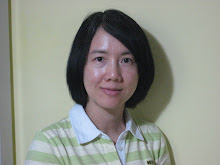
SEVERE MYOCLONIC EPILEPSY IN INFANCY (SMEI) OR DRAVET SYNDROME
This is a very rare form of childhood epilepsy. Out of 500 children with epilepsy, only one, or at most two, children are likely to have this form of epilepsy. It is also called Dravet Syndrome. The epilepsy starts with seizures which may not initially differ from those associated with feverish illnesses (febrile convulsions).
Generally, this syndrome tends to develop during the second year of life. It may not be possible to make this diagnosis until the child is two, three or even four years old. The seizures begin in the first year of life. They are most often associated with high temperatures and often just involve one side of the body, although both sides of the body may be involved.
The seizures are characterised by jerking rather than stiffness and jerking. They often recur quite frequently in the first year of life. However, at this time it is not easy to differentiate these children from others with febrile convulsions who get better and who do not go on to develop other types of seizure.
During the second year of life of children with SMEI, seizures become more frequent and persistent, are often more obviously partial (involving one part of the body) and no longer occur when a child has a high temperature but at any time of day and night.
In addition to the partial seizures, myoclonic jerks (‘myo’ meaning muscle, and ‘clonus’ meaning jerk) become prominent. Often the children are photosensitive (have seizures brought on by flashing lights). Seizures may also sometimes be brought on by hot environments or hot showers or baths.
The early development of affected children is usually normal but once the myoclonic seizures and partial seizures start in their second year of life, children may lose skills or their developmental progress may slow down. The child’s speech and language maybe particularly affected.
For more information on Dravet Syndrome please visit www.epilepsy.org.uk
.








No comments:
Post a Comment
Please write your comments here